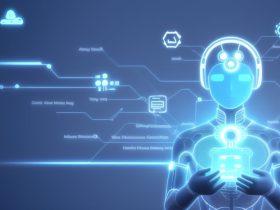Artificial Intelligence (AI) has evolved at an unprecedented pace, surpassing human performance in various domains. From healthcare to finance, AI is revolutionizing industries and reshaping the way we live and work. But what does it mean for AI to surpass human capabilities, and how is this transformation impacting our world? In this article, we’ll explore the remarkable advancements in AI, its real-world applications, and the implications of this technological leap.
What Does It Mean for AI to Surpass Human Performance?
When we say AI surpasses human performance, we’re referring to its ability to outperform humans in specific tasks. This could include accuracy, speed, or efficiency. For instance, AI-powered systems can analyze vast amounts of data in seconds, a task that would take humans weeks or even months. But how does this happen?
The Role of Machine Learning and Deep Learning
Machine learning (ML) and deep learning (DL) are the driving forces behind AI’s ability to surpass human performance. ML algorithms enable systems to learn from data and improve over time, while DL uses neural networks to mimic the human brain’s decision-making process. Together, these technologies allow AI to excel in complex tasks like image recognition, natural language processing, and predictive analytics.
For example, AI systems like OpenAI’s GPT-4 can generate human-like text, while DeepMind’s AlphaFold has solved protein-folding problems that stumped scientists for decades. These breakthroughs highlight AI’s potential to tackle challenges beyond human reach.
Real-World Applications of AI Surpassing Human Performance
AI’s ability to outperform humans is not just theoretical—it’s already making waves across industries. Here are some notable examples:
Healthcare: Diagnosing Diseases with Precision
In healthcare, AI is transforming diagnostics. Systems like IBM Watson Health can analyze medical records and research papers to provide accurate diagnoses and treatment recommendations. Studies show that AI can detect diseases like cancer with higher accuracy than human doctors, saving lives and reducing healthcare costs.
Finance: Enhancing Decision-Making
In the financial sector, AI algorithms analyze market trends and predict stock movements with remarkable precision. Companies like BlackRock use AI to manage investments, outperforming traditional methods. This not only boosts profitability but also minimizes risks for investors.
Manufacturing: Optimizing Production
AI-powered robots are revolutionizing manufacturing by performing tasks with speed and precision. For instance, Tesla’s factories use AI-driven automation to assemble vehicles faster and more efficiently than human workers. This has led to increased productivity and reduced operational costs.
The Ethical Implications of AI Surpassing Human Performance
While AI’s advancements are impressive, they also raise ethical concerns. Here are some key issues to consider:
Job Displacement
As AI takes over tasks traditionally performed by humans, there’s a growing fear of job displacement. According to a McKinsey report, up to 800 million jobs could be lost to automation by 2030. This highlights the need for reskilling and upskilling the workforce to adapt to the changing landscape.
Bias and Fairness
AI systems are only as good as the data they’re trained on. If the data contains biases, the AI will perpetuate them. For example, facial recognition systems have been criticized for racial bias, leading to unfair outcomes. Addressing these issues is crucial to ensure AI’s ethical use.
Privacy Concerns
AI’s ability to analyze vast amounts of data raises privacy concerns. From surveillance to data breaches, the misuse of AI can have serious consequences. Governments and organizations must implement robust regulations to protect individuals’ privacy.
How Can We Harness AI’s Potential Responsibly?
To fully benefit from AI’s capabilities, we must address its challenges responsibly. Here are some actionable steps:
- Promote Transparency: AI systems should be transparent, allowing users to understand how decisions are made.
- Encourage Collaboration: Governments, businesses, and researchers must work together to develop ethical AI frameworks.
- Invest in Education: Equipping the workforce with AI-related skills will help mitigate job displacement.
By taking these steps, we can ensure that AI’s advancements benefit society as a whole.
Conclusion
AI’s ability to surpass human performance is a testament to its transformative potential. From healthcare to finance, it’s reshaping industries and solving complex problems. However, this progress comes with ethical challenges that must be addressed. By promoting transparency, collaboration, and education, we can harness AI’s power responsibly and create a better future for all. As we continue to explore the possibilities of AI, one thing is clear: the journey has just begun.












Leave a Reply